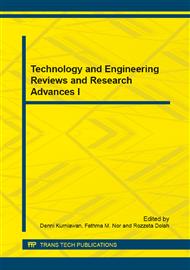p.282
p.289
p.294
p.299
p.304
p.311
p.319
p.326
p.331
Fuzzy Logic System in Quantifying Human Driving Skill for Human Adaptive Mechatronics
Abstract:
Human Adaptive Mechatronic (HAM) is an enhance system for Human Machine System (HMS). Instead of one-way relationship between human and machine, HAM system provides two-way relationship between human and machine in order to assist human and to improve human skills in operating the machine. Driving a car is an example of applications where HAM system can be applied. One of the problems of HAM is to quantify the human skill for operating the machine. Therefore, this paper proposed a method to quantify human driving skill using Fuzzy Logic System (FLS). In order to get the best design of FLS for quantifying human driving skill, twelve designs of FLS were designed and tested using computer simulation software. The best design from all twelve designs is then been compared with other method of quantifying human skill for verification. Results show that the design of membership functions for input and output have big impact to the accuracy of the output.
Info:
Periodical:
Pages:
304-310
Citation:
Online since:
February 2015
Authors:
Price:
Сopyright:
© 2015 Trans Tech Publications Ltd. All Rights Reserved
Share:
Citation:


